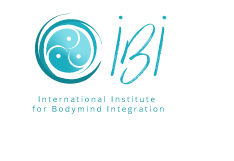What is Senso-Relaxation?
Senso-Relaxation is a method to promote the recognition and regulation of physical tension. It can be used as an independent treatment method, but is also used in combination with other forms of therapy like the “Core Strokes Method”. In this approach, the therapist makes gentle movements with the tense parts of the body. Once the tension perceived, you are invited to let go of the tension, assisted by the adequate support from the therapist who touches the body part and verbalizes the tension signals. The method clearly focuses on interaction and body communication: the passive movement makes physical tension tangible and helps to relax.
Origins
Senso-relaxation was developed by the Dutch psychomotor therapists Bolhuis and Reynders and shows similarities with, for example, the work of Bernhard Gunther who independently developed a “sense-relaxation” method in the USA. Senso-relaxation was originally developed for psychiatric patients, but anyone can benefit from it. In practice, work with self exercises and partner exercises help you sharpen your senses (especially the sense of touch and proprioception) and practice a balanced perception and sensitivity to the environment and the stimuli of your own body.
How does it work?
In an initial phase of treatment, an analysis is made of the nature and degree of tension in your body. The therapist registers the tension signals by means of tactile and kinesthetic information. In contact, therapist and client search for the best moment of relaxation (this is done by continuous feedback mechanisms and the influence of the nervous system by the proprioceptive mechanoreceptors and the verbal guidance of the therapist). We start where you best tolerate the touch. This is usually the preferred side (it is often easier to open up on this side). During the entire treatment, contact is maintained, sometimes words are exchanged. The pressure applied is clear and even, but not too hard. We always stay within the pain or tension limit. A certain order is applied: from arms to shoulders, legs, hips, back, stomach, head and finally the entire body. Often concluded with a number of large shaking exercises and possibly with roll and fall shapes. This order is however not strictly defined.
Focus on body communication and non-verbal language
Senso-relaxation focuses more on body communication and non-verbal language than many other forms of relaxation therapy. Moving, touching, holding or guiding the client’s body, and the way in which s/he allows the passive movements, gives a lot of insight into the personal functioning, dealing with stress and the personal style of making contact. Themes like ‘trust’, ‘security’, ‘nutrition’, ‘freedom’ ‘power and control’, ‘surrender’, ‘boundaries’, ‘love’, ‘sexuality’, etc. all have to do with being able to relax on a deeper level.
Right presence in touch
The therapist applies a “right presence in touch” (Related to the CORE – The Center of Right Energy) with respect for the whole person and for existing boundaries, needs and resistances or contact styles. Sharing the experience and receiving feedback will help achieve that goal.
Did you like this article? Share it in:


